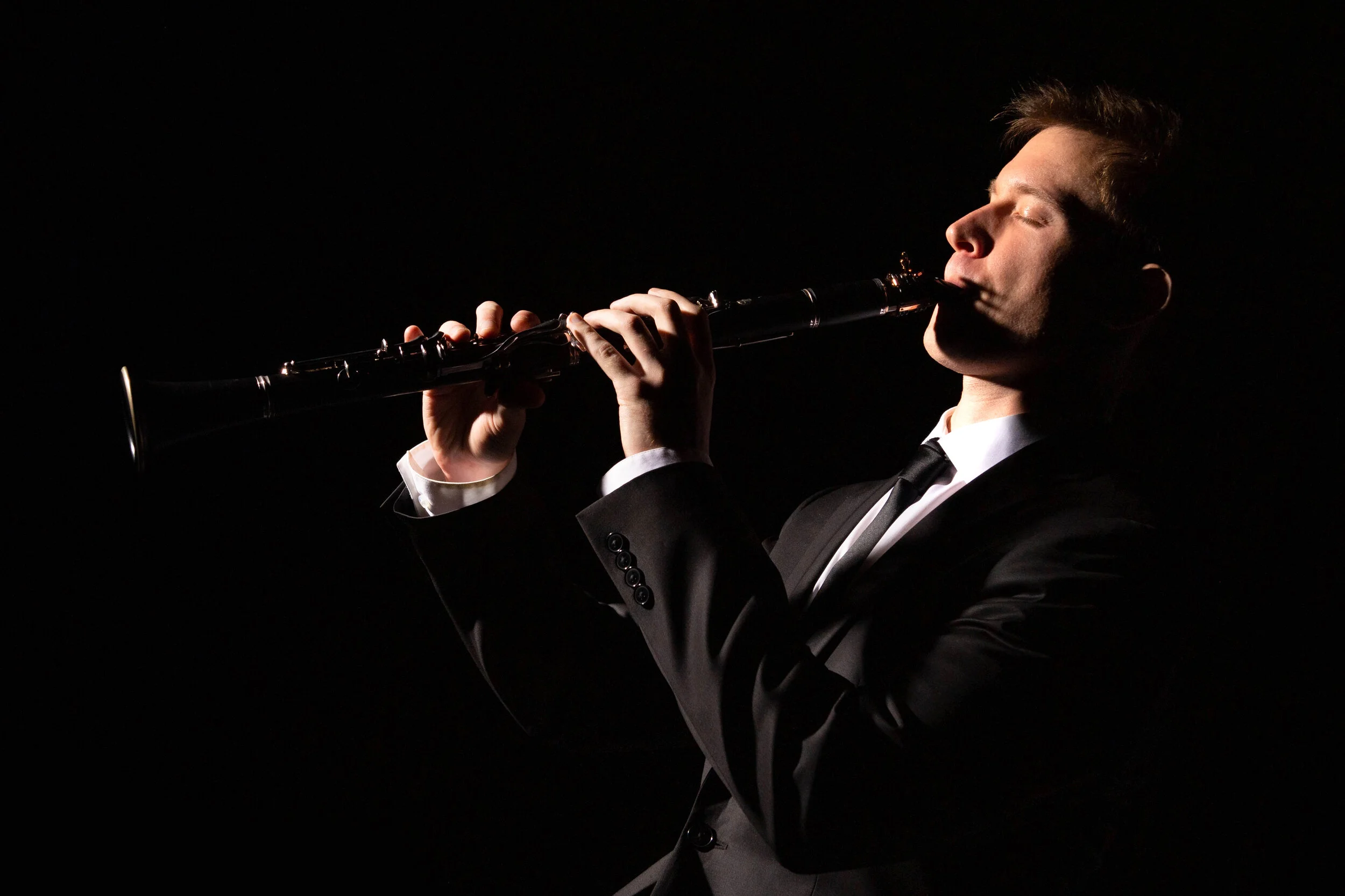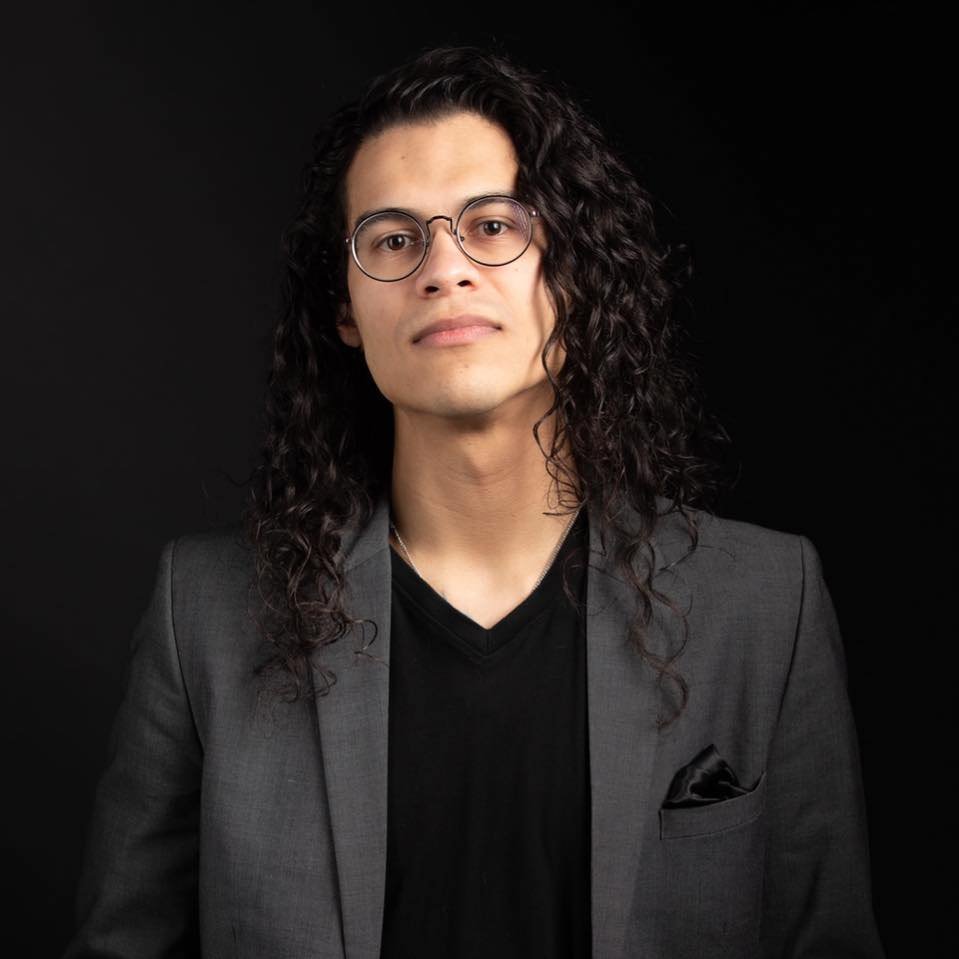
POLYGLOT: the concept album
Eric Schultz, clarinet
featuring Han Chen, piano; Clare Monfredo, cello
hanchenpiano.com / claremonfredo.com
recorded by Mckinley Devilbiss
at Coastal Carolina University
Sonata Santera / Iván Enrique Rodríguez / website
Puerto Rico, as part of the Caribbean, was victim of colonization, genocide of the Taino natives, and slavery. When Spain reached the shores of Puerto Rico it brought with it Catholicism. By establishing itself as the power of authority and government, it forced its religion on all its inhabitants including African slaves. The African population, victims of the Atlantic slave trade, brought with them their Yoruba religion. To avoid being killed by their owners, practitioners of the Yoruba religion syncretized their beliefs with the Catholic religion. The product of this syncretism was Caribbean Santería.
Santería practices different important rituals and in Sonata Santera I present three of them. The first movement is based on the Despojo, a ritual where the santere granting the cleanse baptizes the recipient with tobacco smoke, rum, and orange blossom water while hitting him with different weeds and flowers. The movement is built on the Holandé rhythm from the Puerto Rican Bomba. The second movement focuses on the act of offering, Ofrenda. In this ritual the saints (Yoruba deities with names of Catholic saints) are presented with different offerings on their dedicated altars. These are intended to ask something of the saint, or simply as an act of gratitude. Offerings may include fruits, sweets, tobacco, woods, incense, rum, among other things. In this movement I present a tender and calm atmosphere to later reveal that within all the musical activity the rhythm of Orunmila or Saint Francis of Assisi has been hidden. Orunmila one of the most important saints of the religion. The third movement presents the mystical celebration where the saints are invoked. This celebration or ritual is known as Bembé. The importance of this ritual is such that it carries with it its own dedicated rhythm; the rhythm of Bembé, in which this movement is built on. The celebration of Bembé is full of energy, mysticism, and intensity embodied in the great virtuosity that this culminating movement presents.
-Iván Enrique Rodríguez
Críptico no. 9: DAVЯTHAN / Iván Enrique Rodríguez
The Críptico is a compositional methodology created by Iván Enrique Rodríguez consisting of transforming texts—either quotations or original—into short musical pieces typically for a solo instrument. The metamorphic stage from text to music is fundamental to the work. Each and every one of the text letters becomes a musical note within a particular scale or an assortment of notes put together by the composer. This creates a “cell” in which each Críptico is based. Curiously, as part of the composition process, the composer destroys the text after musically creating the cell. This allows a free interpretation of the work, but it could also incite the performer to decode the cryptic message. This could inspire a different, and perhaps more intimate, interpretation.
-Iván Enrique Rodríguez
Danzón / Johanny Navarro / website
Danzón para clarinete y piano evokes a sentiment of nostalgia and melancholy. These sentiments provided the idea of the title and, subsequently, the form. As the name implies, danzón translates as dance. This particular and unique dance was created in Cuba around the 19th century. The danzón was the expression that resulted from the combination of Spanish and Afro-Cuban aesthetics. This rich and elegant amalgam of textures gave birth to a genre that has impacted El Caribe and the rest of the world. As the traditional intention of danzón, the dancers have to wander into closer embraces as the piece evolves. This magical moment is the main idea for all melodic themes that travel from one instrument to another in a constant but subtle manner. The architectural structure of the piece is based on the traditional form of danzón. Every melody imitates a dance movement, similar to when the dancers get closer and move together as one and when they separate from each other and move independently, creating provocative, sensual movements as they look at each other from afar. Danzón para clarinete y piano paints and depicts the relationship between music and dance, dancers and movement, and colors and rhythms.
-Johanny Navarro
Summer Night in a Deep Valley / Chia-Yu Hsu / website
Summer Night in A Deep Valley is inspired by the Chinese landscape paintings by Guo Xi (c. 1020 – c. 1090). The piece tries to capture the magnificent scenes presented in different layers in the paintings by using various timbres to create a sound world that includes imitations of insects’ and animal sound, rumbling of water, dropping leaves, and blowing breezes. Sometimes the music is meditative to reflect the broad landscape and sometimes it moves swiftly to depict the active night lives in the valley.
-Chia-Yu Hsu
Escenas / Gabriel Bouche Caro / website
Escenas is the result of an active introspection on the topic of identity. With this piece, I do not attempt to clearly depict or make obvious any specific image, nor do I desire to present segmented sections tied to a specific idea, but rather a mix of elements that surfaced as answers to the very difficult question of how to represent my own identity musically. These answers or “scenes,” as the title of the piece suggests, blend together aspects of my own individual identity with the cultural and group identities that combine to create the “me” that only I can see, know and hopefully understand.
In Escenas, the active and chaotic musical material draws from feelings of excitement, happiness, rage and uncertainty all at the same time, while maintaining a high level of energy and activity that serves as an adaptation of the heavily constant and rhythmic character of the sounds that have been essential to my development. The softer, longer and sometimes more traditionally “beautiful” sounds, are reflections upon feelings of longing and sadness that do not wallow in these states but are felt in combination with the love and beauty that I feel towards, and comes from, those important to me, my culture, my community and the natural beauty of the place which I’m lucky to call my homeland.
Such as our memories sometimes distort as time passes, this piece represents my own “distorted” interpretation of the aforementioned elements without attempting to provide an obvious equivalent to any aspect that plays an important role in my life and culture.
-Gabriel Bouche Caro
Clarinet Trio in A minor, Op. 114 / Johannes Brahms
For me, the Brahms Trio, Op. 114 is one of the greatest pieces of chamber music ever written. Like every other work on this album, it represents friendship. Before writing the trio, Brahms was considering retirement from composition. However, he was so fascinated by the playing of his friend, clarinetist Richard Mühlfeld, he continued to compose and wrote many works for the relatively young instrument. Other instruments now envy the clarinet because of this incredible repertoire we have from the composer. Eusebius Mandyczewski, a scholar and friend, wrote "It is as though the instruments were in love with each other.” Moving forward, this piece serves as my model for a new repertoire for the instrument, where composers and performers inspire each other.
-Eric Schultz
Eric Schultz serves as director of the Edwards Center for Inclusive Excellence at Coastal Carolina University.
This album is intentionally designed to showcase a diversity of styles and to support living composers and artists.
“La cultura es el ejercicio profundo de la identidad.” / “Culture is the profound exercise of identity.”
–Julio Cortázar
Thank You!
This project is funded in part by the South Carolina Arts Commission which receives support from the National Endowment for the Arts.
This project was supported with funding from:
Professional Enhancement Grant, Coastal Carolina University
Department of Music, Coastal Carolina University
The South Carolina Arts Commission
Special thank you to:
Kristin Bertrand at woodwindworkshop.com
Mckinley Devilbiss, recording engineer
Antonio Oliart, mixing and mastering
Phil Romano at romanopiano.com
My collaborators and composers, who are my friends
Scott Dean at scottdeanphotography.com
Tian Hui Ng and Massachusetts International Festival of the Arts
interviews with composers:
sneak peeks from our recording sessions (audio from iPhone):
follow me on social media for updates





